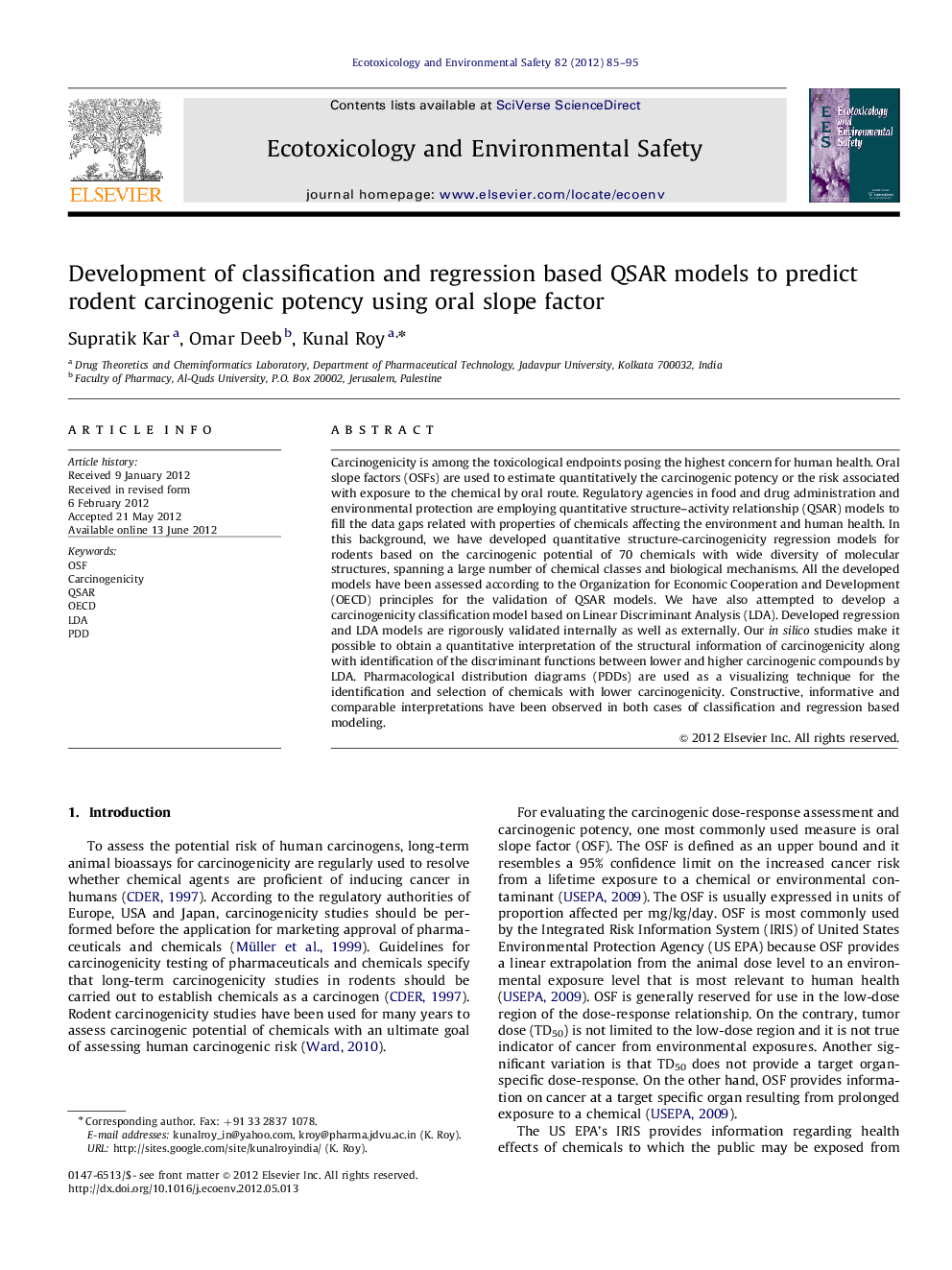| کد مقاله | کد نشریه | سال انتشار | مقاله انگلیسی | نسخه تمام متن |
|---|---|---|---|---|
| 4420853 | 1618981 | 2012 | 11 صفحه PDF | دانلود رایگان |

Carcinogenicity is among the toxicological endpoints posing the highest concern for human health. Oral slope factors (OSFs) are used to estimate quantitatively the carcinogenic potency or the risk associated with exposure to the chemical by oral route. Regulatory agencies in food and drug administration and environmental protection are employing quantitative structure–activity relationship (QSAR) models to fill the data gaps related with properties of chemicals affecting the environment and human health. In this background, we have developed quantitative structure-carcinogenicity regression models for rodents based on the carcinogenic potential of 70 chemicals with wide diversity of molecular structures, spanning a large number of chemical classes and biological mechanisms. All the developed models have been assessed according to the Organization for Economic Cooperation and Development (OECD) principles for the validation of QSAR models. We have also attempted to develop a carcinogenicity classification model based on Linear Discriminant Analysis (LDA). Developed regression and LDA models are rigorously validated internally as well as externally. Our in silico studies make it possible to obtain a quantitative interpretation of the structural information of carcinogenicity along with identification of the discriminant functions between lower and higher carcinogenic compounds by LDA. Pharmacological distribution diagrams (PDDs) are used as a visualizing technique for the identification and selection of chemicals with lower carcinogenicity. Constructive, informative and comparable interpretations have been observed in both cases of classification and regression based modeling.
Graphical AbstractFigure optionsDownload as PowerPoint slideHighlights
► Oral slope factors (OSFs) signify the risk associated with exposure to the chemical by oral route.
► In this study, predictive classification and regression models have been developed using rodent OSF data of 70 chemicals.
► Pharmacological distribution diagrams (PDDs) were used for the discrimination of carcinogenic potential.
► The structural features identified by the regression model were in agreement with the results of classification and PDD approaches.
Journal: Ecotoxicology and Environmental Safety - Volume 82, 1 August 2012, Pages 85–95